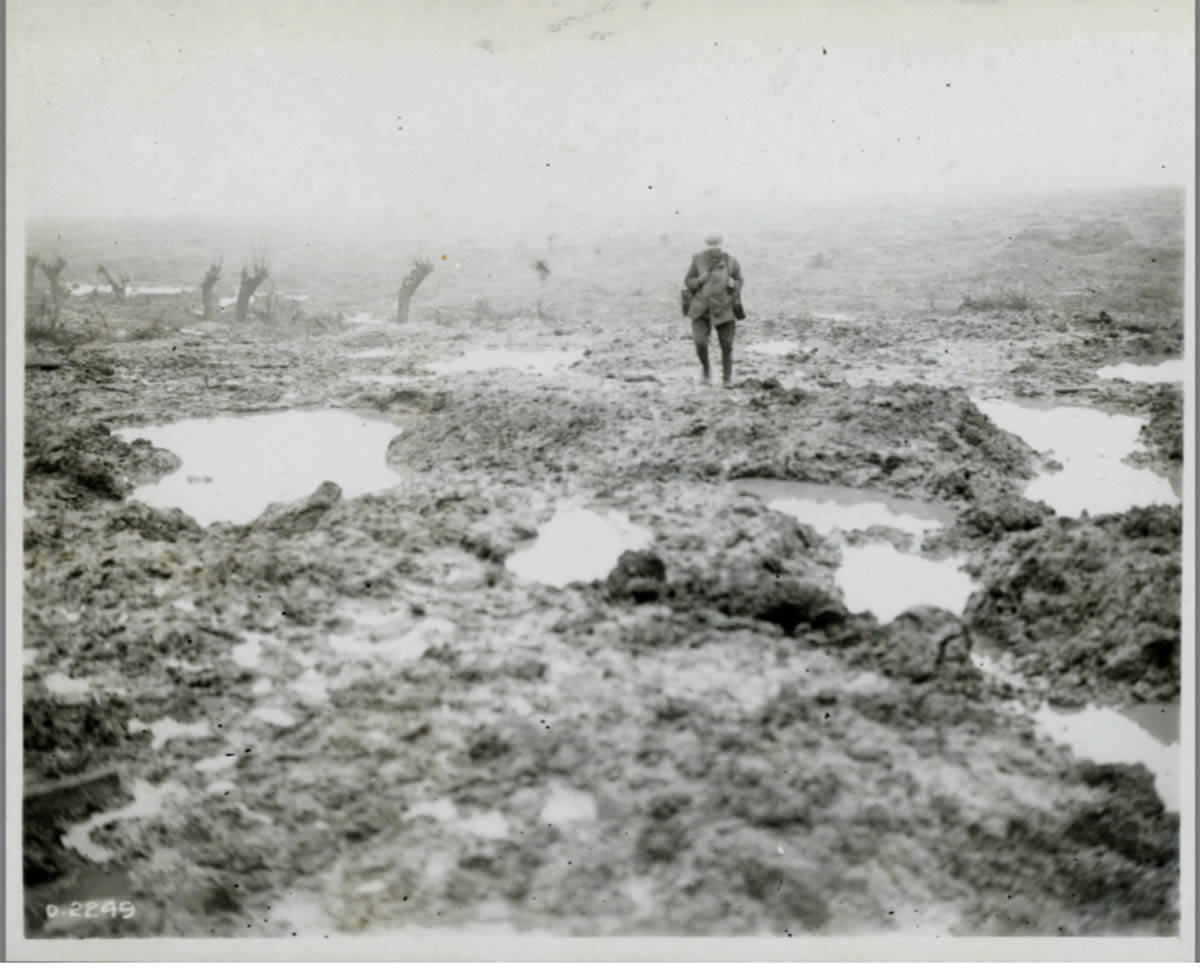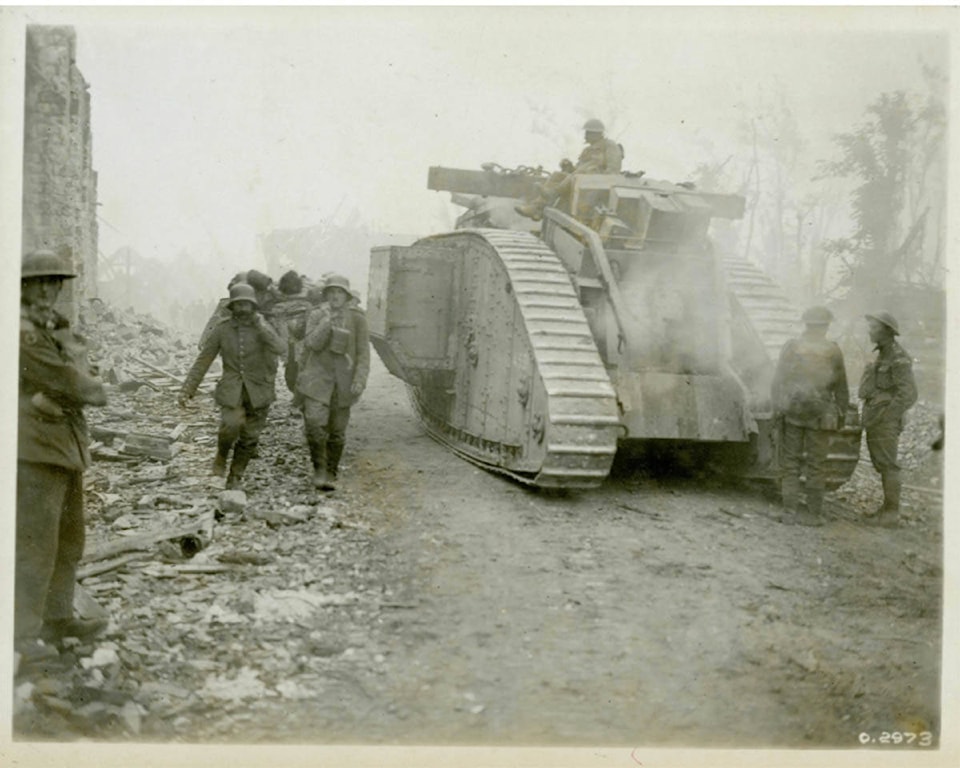By T.W. Paterson
A Victoria military historian has proposed that Victoria’s Bay Street Armoury be named in honour of Victoria’s “most famous” soldier and “perhaps most famous citizen,” Gen. Sir Arthur Currie (1875-1933).
To date, the local public remembrances of Canada’s first general and Commander of the Canadian Corps during the First World War “are a couple of little streets named after him,” Jim Kempling, PhD, told the Times Colonist in April 2019.
In March, the 5th (British Columbia) Regiment, RCA Foundation and the Canadian Scottish Board of Regimental Trustees, representing the two units commanded by Currie prior to the Great War, proposed to the federal government that the landmark castellated brick structure on Bay Street be renamed to General Sir Arthur Currie Armoury.
Mike Heppell, former commander of the Canadian Scottish, doesn’t understand why “such a prominent local building” is named for its street location rather than “such a prominent Canadian military hero.”
Currie has a third link to the Armoury: he commanded the Gordon Highlanders in 1915 when it was opened as a “home” for the Highlanders.
It’s generally accepted by military historians that Canadian soldiers were among the most successful on the battlefields of Europe, and that General Sir Arthur William Currie, Canada’s first full general, was the Allies’ ablest corps commander.
The 43-year-old former teacher, insurance agent and militiaman looked anything but heroic with his large paunch and double-chin. Having moved to the Island as a teenager from Napperton, Ont. where he was born in 1876, he taught in a one-room Sidney schoolhouse and at a Victoria boys’ school before switching to selling insurance and serving as a ‘Sunday soldier’ with the city’s venerable 5th Regiment. He rose quickly through the ranks from gunner (private) to regimental commanding officer.
This was the position he held at the outbreak of war in August 1914. Promoted to brigadier general, he was gazetted to command the 1st Canadian Division and, three years later, was Commander of the Canadian Corps. It was under Gen. Currie’s inspired command that Canadian soldiers ultimately turned the tide of battle by capturing vitally strategic Vimy Ridge. Currie — who, it’s believed, would have been appointed commander of all British forces had the war continued — was decorated with the GCMG, KGC, Crois de Guerre with palms and the Distinguished Service Medal, and knighted by King George V.
But (there’s always a but) Currie wasn’t perfect. For all of his illustrious career, he appears to have crossed the line, morally and perhaps legally, when he ‘borrowed’ $11,000 from regimental funds while in command of the Gordon Highlanders to stave off bankruptcy. He later replaced the money with the help of friends, but only after the matter came to light.
Currie’s second brush with notoriety, one that cut him deeply, is yet a matter of controversy. In the course of his wartime career as Canada’s senior army commander he’d come up against the politician who’d originally given him command of the army, Canada’s notoriously irascible and egocentric Minister of Militia. Sam Hughes is better remembered for having saddled Canadian soldiers with the notoriously unreliable Hughes rifle which he’d designed.
In 1919 Hughes rose in the House of Commons and accused Currie of having squandered Canadian soldiers’ lives for his own glory by sending men into battle in the very last hours of the war. Such a charge was totally counter to Currie’s demonstrated record of attempting to keep casualties to a minimum (quite unlike British and French generals who repeatedly sent hundreds of thousands of men to their deaths in battles that had no chance of being won).
In the House, Hughes could hurl accusations with impunity and it wasn’t until 1928, when a newspaper repeated Hughes’s accusation, that Currie was able to sue for libel. He won the suit but, as is so often the case, suspicions continued to haunt him.
Felled by a stroke in 1933 he died of complications from pneumonia. His funeral in Montreal drew 150,0000 mourners and the British held a “packed service” in Westminster Abbey.
Canadian soldiers remembered Currie for his having refused to let the British Army, badly depleted by casualties as much the result of poor leadership as of German guns, siphon off colonial Canadian troops to reinforce British ranks. It was under Currie’s inspired command that the Canadians, as Canadians, properly trained, properly equipped and properly supported, went into battle — and won.
Quite simply, to again quote historian Jim Kempling, Currie is “well lauded as Canada’s best-known and most successful general”.
•••
In November 1919 Gen. And Lady Currie were guests of honour at a fundraising event in Nanaimo as part of the campaign to sell Victory bonds. Just a year had passed since Armistice and the sacrifices made by local men were fresh in the memories of families and friends. Upon his being presented by Mayor McKenzie, the Curries received a rousing ovation from the audience which had packed the Dominion Theatre, decorated with flags and bunting, to capacity.
Currie began his address by thanking “the men and women at home for their support they had given the boys at the front,” particularly the “comforts” they’d sent to those serving overseas. He referred to the battles of Passchendaele, Lens, Amiens, Ypres, Arras, Cambrai — “there never was a more formidable position to attack” — Valenciennes and Mons (the latter town captured by the Canadians in the early hours of Armistice Day in the battle criticized by Hughes), and the last great German offensive. Currie also acknowledged the late enemy: “He was not a superman but he was a good soldier.”
He cited facts and figures that showed how the Canadians had, time and again, won staggering gains and had ultimately defeated fully one-quarter of the German army on the Western Front. Although this was achieved at the cost of almost 70,000 casualties, “in proportion to our strength, we…sustained less than any British troops in the war”.
Currie concluded by paying tribute to those Canadians who’d paid the ultimate sacrifice: “By dying they re-created Canada. Let us make ourselves and Canada worthy of their sacrifices.”
He was heartily applauded and J.M. Rudd, chairman, thanked him on behalf of the Victory Loan Committee which had sponsored his appearance. Mrs. T.W. Martindale, representing the ladies of Nanaimo, presented Lady Currie with a bouquet of white flowers.
On behalf of the Victoria bond drive, J.B. Warnicker appealed to Nanaimo residents to buy more bonds for “selfishness” and patriotism (the bonds paid interest that stayed home rather than going to overseas capitalists) and for sentiment, in that the monies generated helped former servicemen to re-establish their lives in peacetime.
The evening concluded with the whole audience participating in a rousing rendition of “Everybody’s Saving Money,” sung to the tune of a popular ditty, “Bubbles.”
Gen. Sir Arthur Currie served as general of the militia forces in Canada until he became principal and vice-chancellor of McGill University in 1926, the position he held until his death in 1933. The Canadian Encyclopedia states that, despite his having been without benefit of a post-secondary education himself, “he was extraordinarily successful as a university administrator, at a time of particular importance in McGill’s development.”
Which brings us back to the campaign to rename Bay Street Armoury to the General Sir Arthur Currie Armoury. It’s been a year now and we’re still waiting, Ottawa.
For more from T.W. Paterson, check out twpaterson.com

